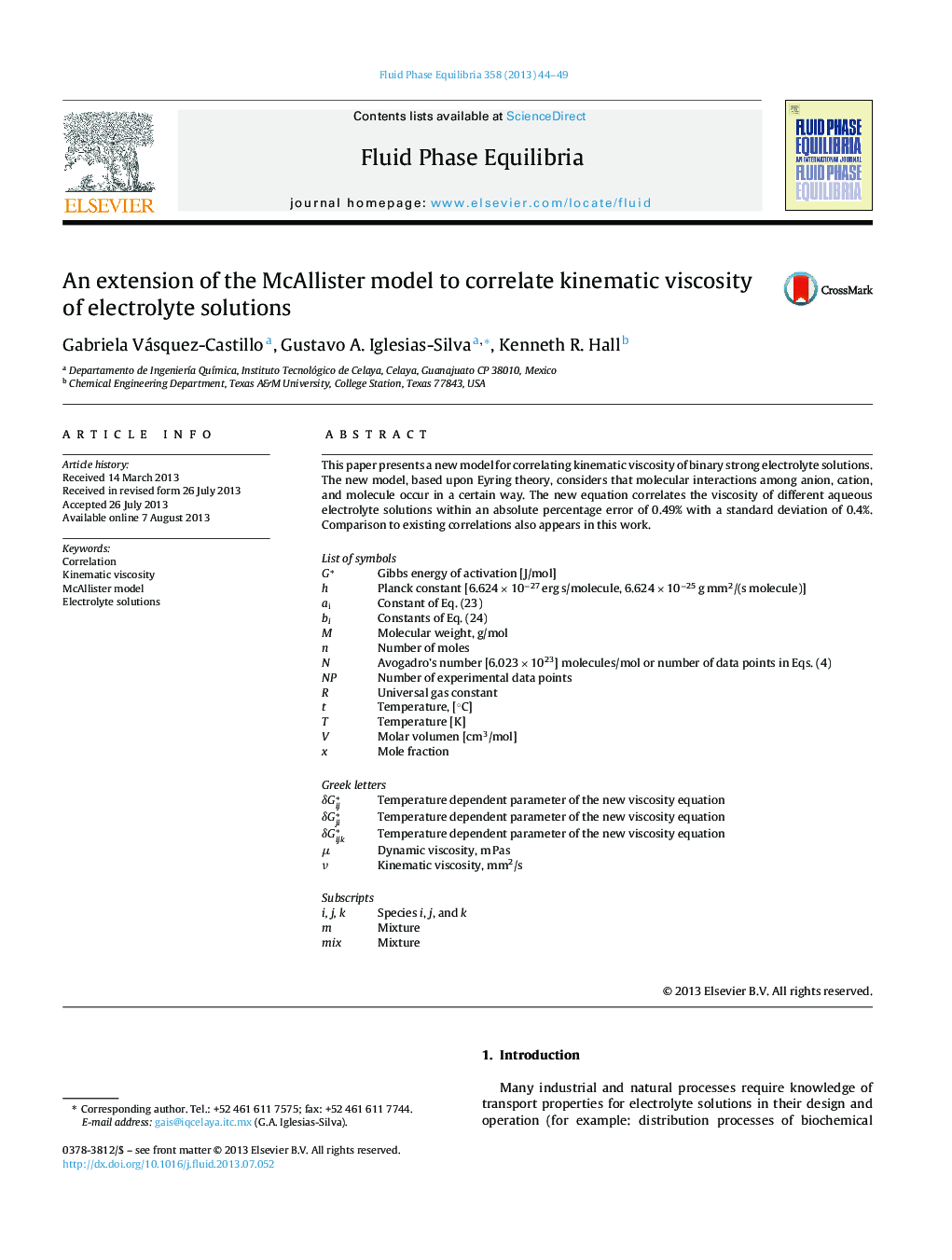| کد مقاله | کد نشریه | سال انتشار | مقاله انگلیسی | نسخه تمام متن |
|---|---|---|---|---|
| 203251 | 460644 | 2013 | 6 صفحه PDF | دانلود رایگان |

• We extent the McAllister model for the correlation of the kinematic viscosity of electrolyte solutions.
• We consider molecular interactions and assumptions in the activation Gibbs energy.
• We compare the new equation with commonly used correlations for the kinematic viscosity of electrolyte solutions obtaining a good agreement.
• We have included the temperature dependence of the viscosity in the new model.
• We have tested the extrapolation behavior of the new correlation.
This paper presents a new model for correlating kinematic viscosity of binary strong electrolyte solutions. The new model, based upon Eyring theory, considers that molecular interactions among anion, cation, and molecule occur in a certain way. The new equation correlates the viscosity of different aqueous electrolyte solutions within an absolute percentage error of 0.49% with a standard deviation of 0.4%. Comparison to existing correlations also appears in this work.List of symbolsG*G*Gibbs energy of activation [J/mol]hPlanck constant [6.624 × 10−27 erg s/molecule, 6.624 × 10−25 g mm2/(s molecule)]aiConstant of Eq. (23)biConstants of Eq. (24)MMolecular weight, g/molnNumber of molesNAvogadro's number [6.023 × 1023] molecules/mol or number of data points in Eqs. (4)NPNumber of experimental data pointsRUniversal gas constanttTemperature, [°C]TTemperature [K]VMolar volumen [cm3/mol]xMole fractionGreek lettersδGij*Temperature dependent parameter of the new viscosity equationδGji*Temperature dependent parameter of the new viscosity equationδGijk*Temperature dependent parameter of the new viscosity equationμDynamic viscosity, m PasνKinematic viscosity, mm2/sSubscriptsi, j, kSpecies i, j, and kmMixturemixMixture
Figure optionsDownload as PowerPoint slide
Journal: Fluid Phase Equilibria - Volume 358, 25 November 2013, Pages 44–49